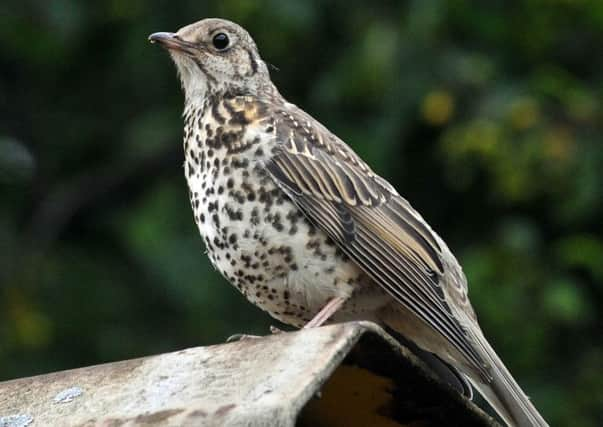Birdwatch: False dawn of spring lures birds to sing from the branches


Mistle thrushes have been heard across Yorkshire over the last week or so singing from the highest available tree or building and they will continue to do so even if there is a return to wintery weather.
An old name for this bird was the storm cock because of its preference for lofty perches whilst its song is one of the furthest carrying of all British birds, a few wild phrases which often stop abruptly.
Advertisement
Hide AdAdvertisement
Hide AdMistle thrushes are amongst the earliest breeding birds and some will be nesting early next month - traffic lights seem a favoured location with the heat from the bulbs helping to keep the nestlings snug.
A pair will take control of a holly, hawthorn or yew tree and, uttering their football rattle flight calls, chase off any other birds attempting to feed on the berries.
The British Trust for Ornithology says that birds guarding berries in this way are able to produce earlier clutches than those that do not and, being larger than other thrushes and more aggressive, mistle thrushes are well able to fend off encroachments by rivals such as starlings.
The first song thrushes have been heard; only a few brief notes at first but the song will steadily increase until July, unless the weather turns much colder.
Advertisement
Hide AdAdvertisement
Hide AdRobins have been singing throughout December, often throughout the night, as they guard territories. But in the coming weeks the song grows richer and sweeter.
Hedge sparrows are also singing and displaying in the mild weather while wrens, largely silent until now, are pairing up and coming out from the reedbeds to deliver their loud spring songs from up in the trees and bushes.
The loud and penetrating song of Cetti’s warblers continues to be heard in many places with a remarkable estimate of between 15-20 present in the reedbeds on the RSPB’s Blacktoft Sands reserve near Goole.
There are also between 200-300 bearded tits present, a far cry from January 2011 when a spell of freezing weather all but wiped them out on the reserve.
Advertisement
Hide AdAdvertisement
Hide AdA young drake surf scoter, a vagrant from North America, has been seen again off Filey Brigg, the seventh recorded there, and black-throated and great northern divers have been seen in the bay.
There was also Flamborough’s first December yellow-browed warbler, seen in South Dykes. A Siberian chiffchaff was reported on Vicars Lane, Easington.
Inland a juvenile great northern diver continued to be seen on the Calder Wetland, Wakefield, a redhead red-breasted merganser at Wintersett reservoir and white-fronted and pink-footed geese and a green-winged teal at Wheldrake Ings.
A hawfinch was seen again in the trees around St Hilda’s churchyard, Ampleforth.
Very few white-winged gulls have been reported but a juvenile glaucous gull was seen in the roost on the Main Lake at Swillington Ings, Leeds and an adult at Rufforth near York.